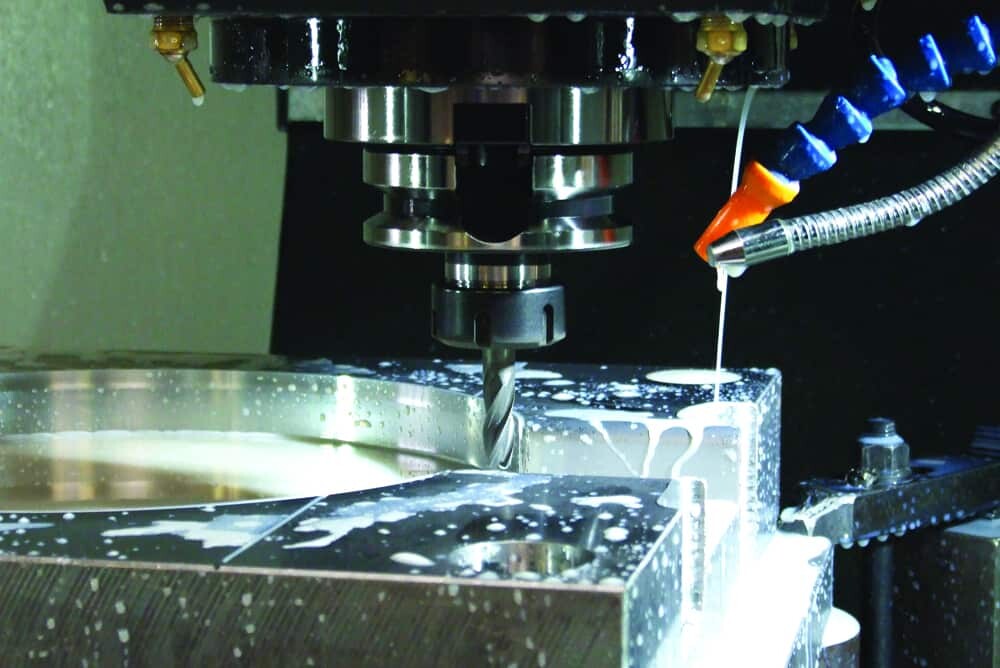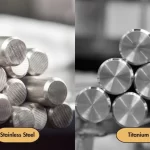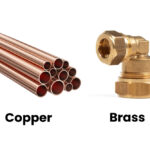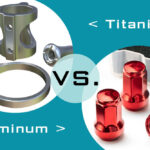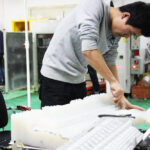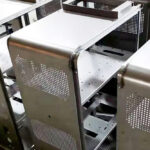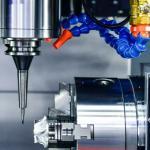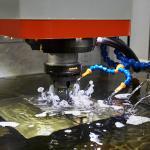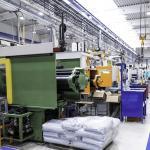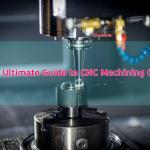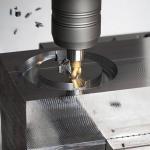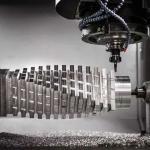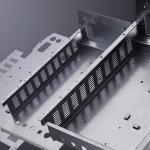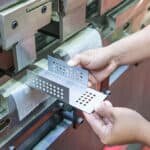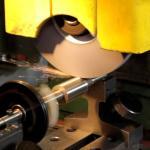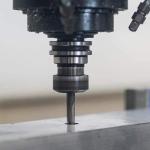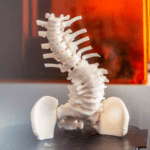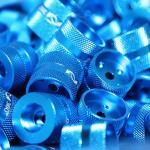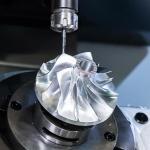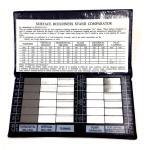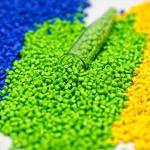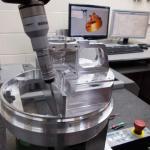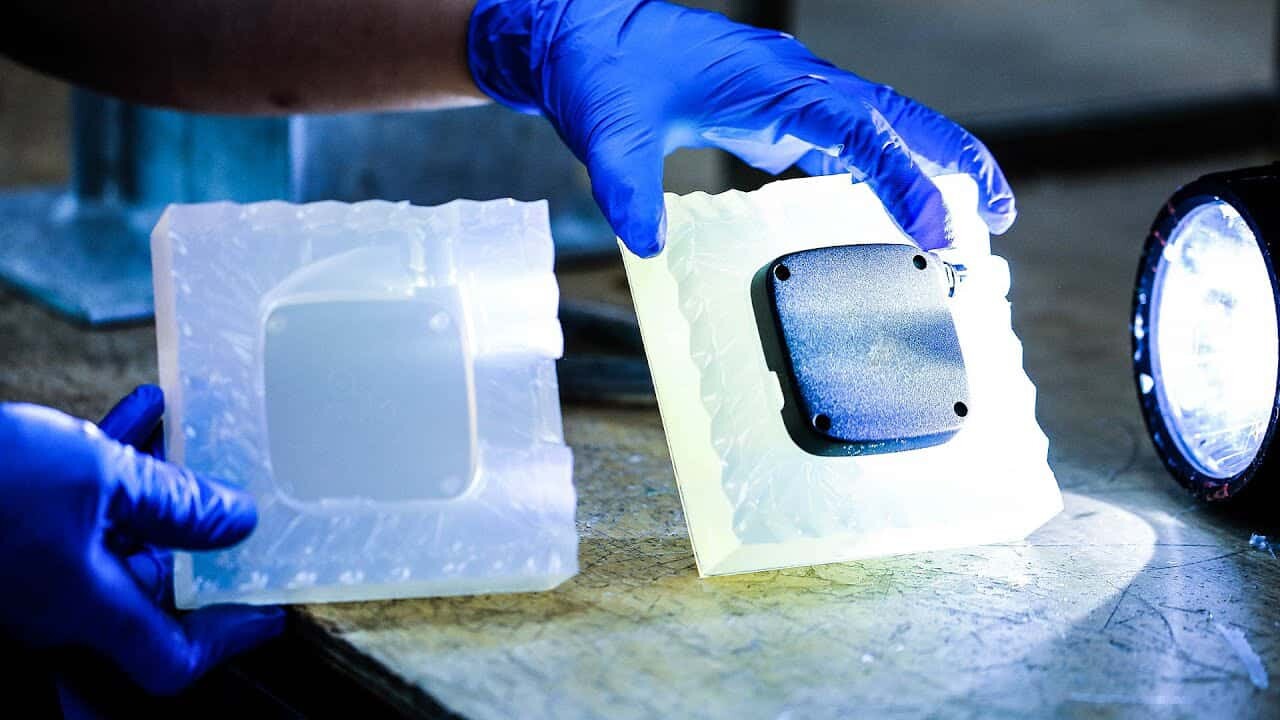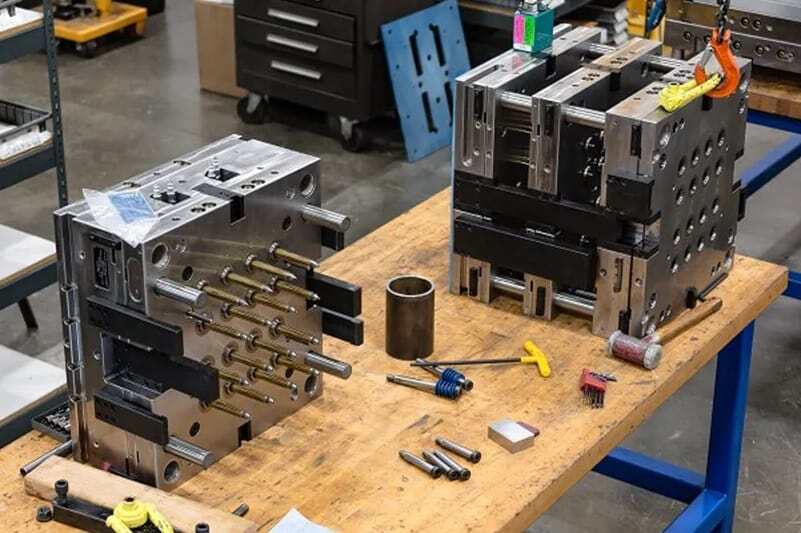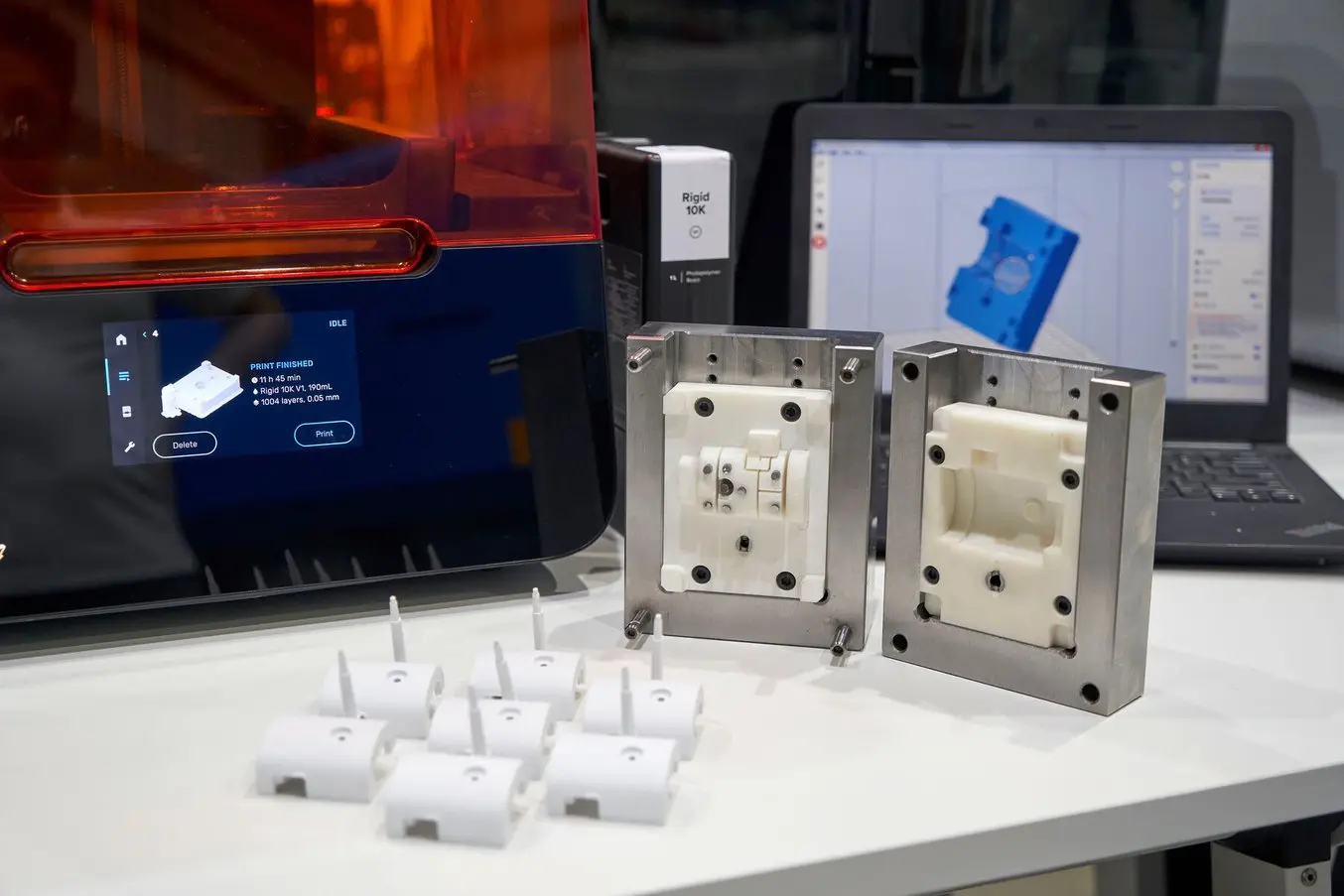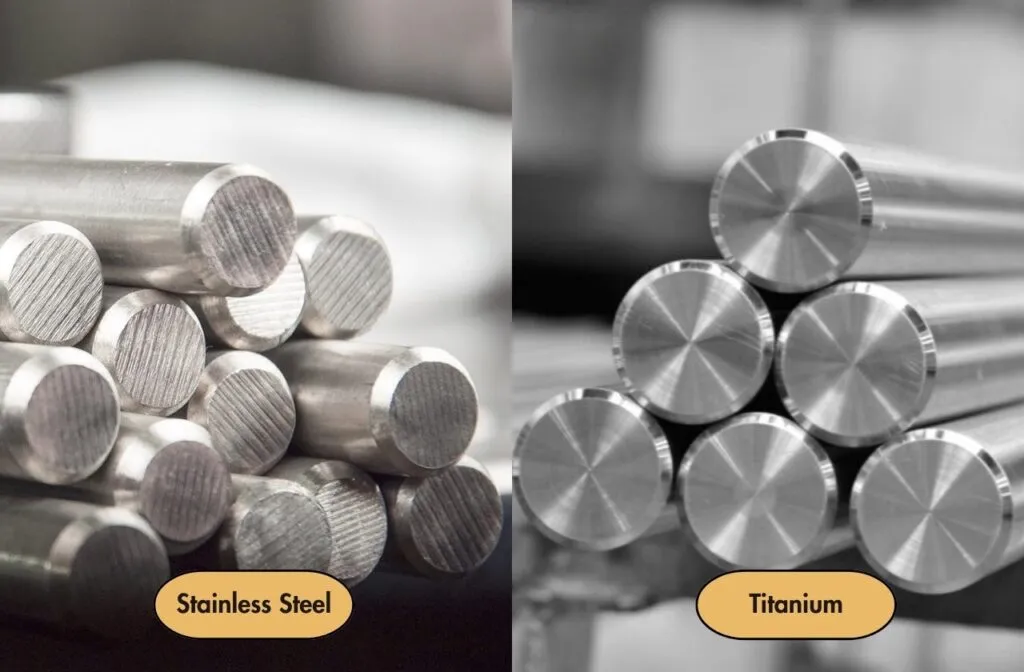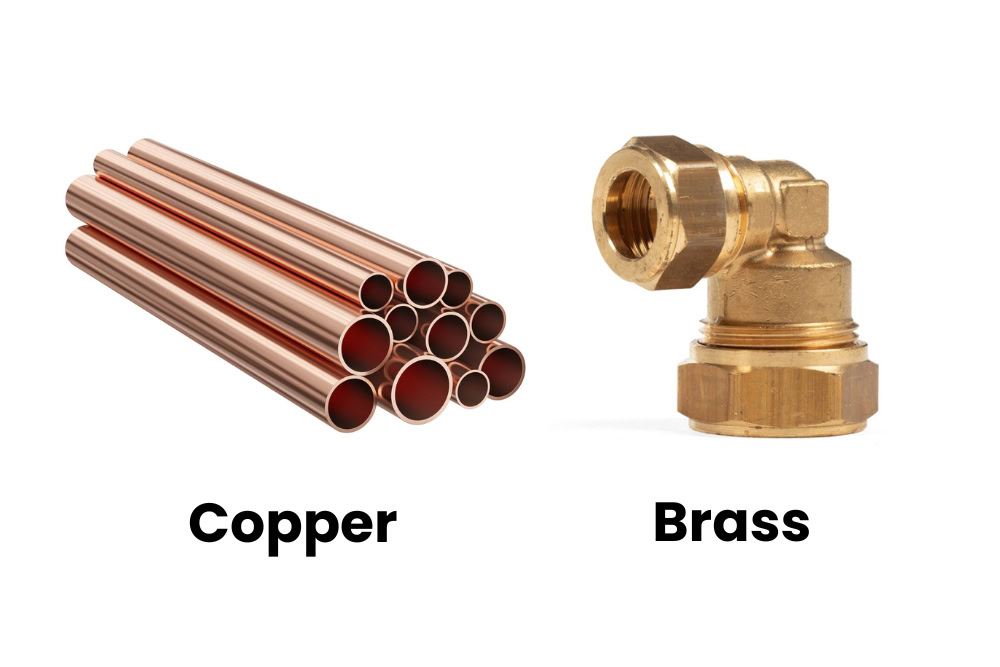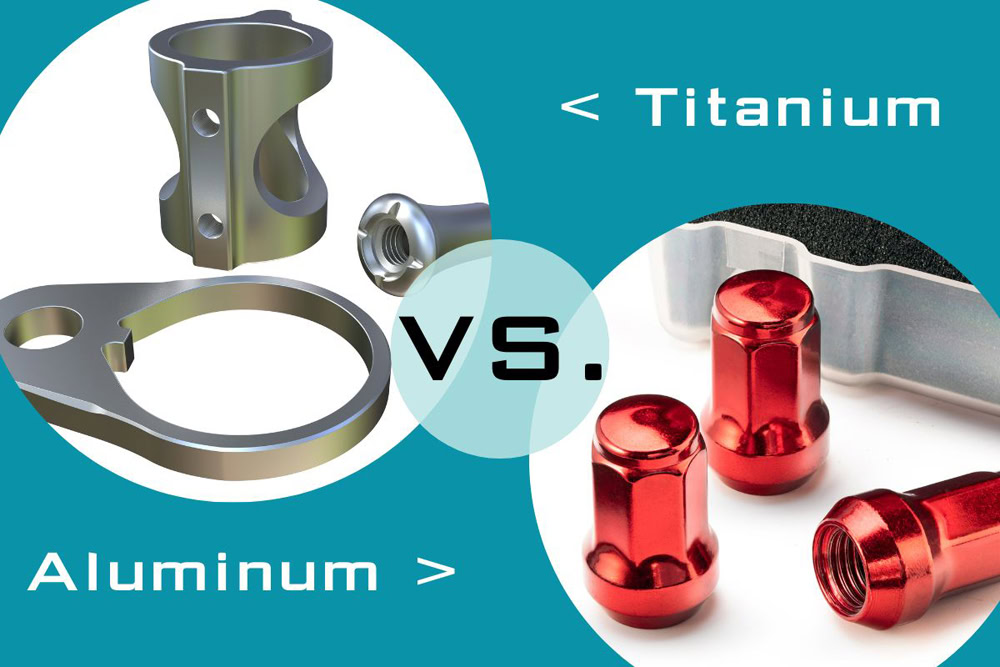CNC machining requires expertise in materials science to ensure the best results. CNC machining is an advanced manufacturing process that involves the use of computerized tools to produce complex and precise parts. When it comes to CNC machining, the selection of the right materials is crucial to the success of the project. Without the right materials, the finished product may not meet the desired specifications, and the cost of machining could significantly increase.This guide outlines the most commonly used materials in CNC machining and their unique properties. Choosing the right material depends on the specific project requirements and application. By understanding the advantages and limitations of each material, CNC parts designers can achieve precision and accuracy in their machining projects.
Table of Contents
ToggleFactors in choosing the right CNC materials
Selecting the right materials for CNC machining is a critical step in ensuring the success of the project. It involves considering factors such as the application of the part, the machining process, the cost and availability of the materials, and the quality and performance of the finished product. By taking the time to consider these factors, CNC parts designers can optimize the manufacturing process, ensure the desired specifications are met, and reduce the overall cost and time required for production.

1. Determine the application of the part: The first step in choosing the right material for CNC machining is to determine the purpose of the part. Will it be used outdoors? Does it require high strength and durability? Does it need to withstand high temperatures? The answers to these questions will help to narrow down the selection of materials. For instance, if the part will be used outdoors, materials that can withstand corrosion, weathering, and temperature changes would be the best options.
2. Consider the machining process: Another vital factor to consider when selecting materials for CNC machining is the machining process itself. Certain materials are easier to machine than others, and this can affect the cost and time required to produce the finished parts. For instance, some materials like brass, aluminum, and plastics are easier to machine than steel and titanium. In such cases, the use of the easy-to-machine materials could optimize the machining process, reduce the machining time, and lower the cost of production.
3. Understand the properties of materials: After identifying the requirements of the part, the next step is to understand the material’s properties. Different materials have different properties, such as strength, stiffness, toughness, thermal conductivity, electrical conductivity, corrosion resistance, and cost. CNC parts designers must know the properties of the materials they are considering and how they compare to each other. This knowledge will enable them to select a material that will meet the part’s requirements and provide optimal performance.
4. Think about cost and availability: The cost and availability of the materials are also important factors to consider when selecting the right materials for CNC machining. Some materials may be more expensive than others, and this can affect the overall cost of the project. Additionally, some materials may not be readily available, which could delay the project’s timeline. It is, therefore, essential to consider both the cost and availability of the materials before making a final decision.
5. Look out for quality and performance: The final factor to consider when selecting the right materials for CNC machining is the quality and performance of the finished product. Some materials may provide a higher level of precision, accuracy, and durability than others, and this could affect the functionality and longevity of the part. For instance, titanium is known for its high strength, corrosion resistance, and low weight, making it a suitable material for aerospace and medical applications where quality and performance are paramount.
AN-Prototype summarizes an infographic of materials that you can use as a quick reference to quickly identify CNC materials suitable for specific engineering needs:

Grade | Strength* | Hardness+ | Machinability | Cost | Typical applications |
Aluminum 6061 | Medium | Medium | ★★★★★ | $ | General purpose Aircraft components Automotive parts Bicycle frames Food containers |
Aluminum 6082 | Medium | Medium | ★★★★★ | $ | General purpose Automotive parts Food containers |
Aluminum 7075 | High | Medium | ★★★★ | $$$ | Aircraft & aerospace components Automotive parts Marine applications Sports equipment |
Aluminum 5083 | Medium | Low | ★★★★★ | $$ | Marine applications Construction Pressure vessels |
Stainless steel 304 | High | Medium | ★★ | $$$ | General purpose Medical devices Food industry Marine applications Chemical processing |
Stainless steel 316 | High | Medium | ★★ | $$$$ | Food preparation equipment Marine applications Architecture Surgical implants Chemical containers |
2205 Duplex | High | High | ★ | $$$$$ | Oil & gas Marine applications Chemical processing Heat exchangers |
Stainless steel 303 | High | High | ★★★ | $$$$ | Aircraft components Machine parts Nuts, bolts, gears, bushings |
Stainless steel 17-4 | High | Very High | ★★ | $$$$$ | Turbine blades Marine applications Chemical vessels Oil & Gas Nuclear applications |
Mild steel 1018 | Medium | Medium | ★★★ | $$ | General purpose Machinery parts Jigs & fixtures |
Mild steel 1045 | Medium | High | ★★ | $$$ | General purpose Machinery parts |
Mild steel A36 | High | Medium | ★★★ | $$ | Construction Machinery parts Jigs & fixtures |
Alloy steel 4140 | Medium | High | ★★ | $$$ | General purpose Machinery parts Tooling |
Alloy steel 4340 | High | High | ★★ | $$$ | Aircraft landing gear Power transmission Tooling |
Tool steel D2 | High | Very High | ★ | $$$$ | Cold-working tooling Dies & stamps Cutting tools & knives |
Tool steel A2 | High | Very High | ★ | $$$$ | Cold-working tooling Dies & stamps Cutting tools & knives |
Tool steel O1 | High | Very High | ★ | $$$$ | Cold-working tooling Dies & stamps |
Brass C36000 | Medium | Medium | ★★★★★ | $$ | Mechanical parts Valves & nozzles Architecture |
Tensile Yield Strength – Medium: 200-400 MPa, High: 400-600 MPa
Hardness – Medium: 50-90 HRB, High: 90 HRB – 50 HRC, Very High: above 50 HRC
Material | Strength* | Operating temperature+ | Machinability | Cost | Typical applications |
Medium | Up to 60oC | ★★★ | $$ | Automotive Electronic enclosures Pipes & fittings Consumer products | |
High | Up to 100oC | ★ | $$ | Automotive parts Mechanical parts Fasteners | |
High | Up to 120oC | ★★ | $$ | Architecture Automotive Electronic enclosures Food containers | |
Medium | Up to 82oC | ★★★★ | $$ | Mechanical parts Electronic enclosures Bushings & fittings | |
Low | Up to 260oC | ★★★★ | $$ | High-temperature applications Chemical processing Electronic enclosures Food processing | |
Low | Up to 80oC | ★ | $$ | Chemical containers Pipes & fittings Consumer products | |
High | Up to 260oC | ★★ | $$$$ | Medical applications Chemical processing Food processing High-pressure valves |
Tensile Yield Strength – Low: 5-30 MPa, Medium: 30-60 MPa, High: 60-100 MPa.
Recommended maximum operating temperature for constant use.
Choosing the right Aluminum grade for your CNC parts designing can make a significant difference in the quality and durability of the finished product. Aluminum 6061, 6082, 7075, 5052, and 5083 are some of the most popular Aluminum grades used in CNC parts designing due to their excellent properties such as high strength-to-weight ratio, corrosion resistance, machinability, and weldability. By understanding the material properties of each Aluminum grade, CNC parts designers can make informed choices that result in high-quality parts that are strong, durable, and resistant to wear and tear.
1. Aluminum 6061:
Aluminum 6061 is an alloy that consists of magnesium and silicon, which enhances its weldability and corrosion resistance. It has moderate to high strength and is commonly used for structural and mechanical components such as aircraft parts, bicycle frames, automobile parts, and marine hardware. It offers excellent machinability and responds well to anodizing, which enhances its surface hardness and corrosion resistance. It has a typical tensile strength of 40,000 PSI and a yield strength of 35,000 PSI.
2. Aluminum 6082:
Aluminum 6082 is an alloy that contains magnesium and silicon and is known for its high strength. It is widely used in aerospace and marine applications due to its excellent corrosion resistance and high durability. It offers excellent machinability and forms well under hot and cold forging. It has a typical ultimate tensile strength of 45,000 to 58,000 PSI and a yield strength of 25,000 to 45,000 PSI.
3. Aluminum 7075:
Aluminum 7075 is a high-strength alloy that contains zinc and is commonly used in aerospace and defense applications due to its excellent strength-to-weight ratio. It offers excellent machinability and can be easily welded and formed. It has a typical tensile strength of 83,000 to 86,000 PSI and a yield strength of 73,000 to 76,000 PSI.
4. Aluminum 5052:
Aluminum 5052 is an alloy that contains magnesium and offers excellent corrosion resistance and high machinability. It is commonly used in marine and automotive applications due to its durability and weldability. It has a typical ultimate tensile strength of 28,000 to 33,000 PSI and a yield strength of 13,000 to 15,000 PSI.
5. Aluminum 5083:
Aluminum 5083 is an alloy that contains magnesium and is known for its high strength and excellent corrosion resistance. It is widely used in shipbuilding, aircraft, and automotive applications. It offers excellent weldability and can be easily formed without cracking. It has a typical ultimate tensile strength of 46,000 to 63,000 PSI and a yield strength of 21,000 to 42,000 PSI.
Stainless steel has been a critical component of CNC parts designing for decades. Its unique properties make it versatile and suitable for many different applications. Therefore, it is crucial to understand each type of stainless steel and its properties, so you can make the right choices for your CNC parts designs. By knowing the properties of the 303, 304, 316, 2205 Duplex, and 17-4 grades, you can decide which type of stainless steel will best fit your needs, allowing you to choose the right material for your CNC machining process. With these insights, it will be easier for you to make informed decisions when it comes to selecting materials for your parts.
Stainless Steel Grade 303: This grade is also known as the “free-machining” austenitic stainless steel grade. It is perfect for CNC machining and is characterized by excellent machinability, good resistance to corrosion, and outstanding durability. As a result, it’s often used in the manufacturing of precision components, shafts, and fittings.
Stainless Steel Grade 304: This is the most popular and commonly used-grade due to its excellent combination of formability, weldability, and corrosion resistance. It exhibits impressive resistance to chemical corrosion, high-temperature oxidation, and erosion. Thus, it is ideal for a broad range of applications, including the food and beverage industry, architectural applications, and laboratory equipment manufacturing.
Stainless Steel Grade 316: This is the second most common stainless steel grade. It exhibits improved corrosion resistance due to the addition of molybdenum, making it perfect for maritime and coastal applications, since it can withstand harsh sea conditions. It is suitable for use in harsh environments that subject materials to high temperatures, humidity, and aggressors like chloride.
Stainless Steel Grade 2205 Duplex: It is a two-phase, ferritic-austenitic stainless steel alloy with increased tensile strength, good resistance to stress corrosion cracking and pitting corrosion. It is frequently used in chemical processing, oil and gas industries, and heat exchangers.
Stainless Steel Grade 17-4: It is a precipitation-hardening martensitic stainless steel that can be heat treated to achieve a high level of strength and toughness. It provides excellent corrosion resistance in the hardened condition, making it a great choice for various applications like aircraft and aerospace components, oil and gas parts, and medical devices.
CNC Machining Mild Steel
Mild steel, also known as low carbon steel, is a popular and cost-effective material for CNC machining. It contains less than 0.3% carbon by weight and is easy to work with using CNC machines. Mild steel has excellent formability and weldability, making it suitable for various applications. It is also ductile, which means it can be rolled into thin sheets without breakage.
1. Mild Steel 1018: Mild Steel 1018 is a low carbon steel with a carbon content of approximately 0.18%. It is a popular material for CNC machining because of its strength, durability, and machinability. Its low carbon content makes it easy to weld and form into various shapes and sizes. Mild Steel 1018 is ideal for parts that require strength, toughness, and high wear resistance such as gears, bushings, pinions, and couplings.
2. Mild Steel 1045: Mild Steel 1045 is a medium carbon steel with a carbon content of approximately 0.45%. It is stronger and more durable than 1018, and it is ideal for CNC parts that require higher strength and hardness. Mild Steel 1045 is commonly used in CNC parts designing applications such as shafts, gears, and axles.
3. A32 Steel: A32 steel is a high-strength, low-alloy steel that is commonly used in CNC parts designing applications. A32 steel has a higher strength-to-weight ratio than mild steel, making it ideal for parts that require lightweight yet strong materials. A32 steel is used in the fabrication of CNC parts such as structural components, frames, and fittings.
4. Machinability: Mild steel 1018, 1045, and A32 have good machinability, meaning that they are easy to machine into desired shapes and sizes using CNC machines. The machinability of these materials depends on various factors such as cutting speed, feed rate, and the type of tool used. Generally, mild steel with lower carbon content such as 1018 is easier to machine than those with higher carbon content such as 1045.
5. Weldability: Mild steel 1018, 1045, and A32 have good weldability, meaning that they are easy to weld together. However, the welding process for these materials differ depending on their carbon content and other properties. Mild Steel 1018 can be welded using any welding method, while Mild Steel 1045 and A32 steel require preheating before welding to prevent cracking.
CNC Machining Alloy Steel Materials
CNC machining alloy steel allows for high precision and accuracy, resulting in parts with tight tolerances and intricate features. When CNC machining alloy steel, several factors should be considered, such as the hardness of the material, the complexity of the part, and the required surface finish. Choosing the right CNC machining service provider is crucial for the success of your project, so look for a provider that has experience machining alloy steel and can provide high-quality parts to your specifications.
1. 4140 Alloy Steel
Alloy steel 4140 is a versatile material with superior mechanical properties that make it an ideal choice for various CNC parts design applications, including gears, shafts, spindles, and axles. The excellent machinability of 4140 alloy steel makes it a popular choice in the manufacturing of CNC parts that require intricate shapes and tight tolerances.
The strength of 4140 alloy steel is high, with a yield strength of 60,000 psi and an ultimate tensile strength of 95,000 psi. It has a good impact resistance and toughness, making it suitable for applications that require high-stress resistance. Additionally, 4140 alloy steel exhibits good wear resistance, making it resistant to abrasion, and corrosion resistance, making it immune to corrosion.
2. 4340 Alloy Steel
The properties of 4340 alloy steel are similar to those of 4140 alloy steel, with added benefits in terms of strength and toughness. The added nickel in 4340 alloy steel enhances its toughness and ductility, making it an excellent option for high-stress applications.
The yield strength of 4340 alloy steel is 95,000 psi, and the ultimate tensile strength is 140,000 psi, making it an excellent material for components that face high loads. Its unique composition enables it to retain its toughness even in high-stress applications where other materials would fail.
Alloy steel 4140 and 4340 are high-performance materials with superior mechanical properties that make them an ideal choice for CNC parts designers. Their excellent strength, toughness, machinability, and heat-treatability make them suitable for various applications that require precision components. Their wear and corrosion resistance also make them long-lasting, reducing the need to replace components frequently. CNC parts designers must consider alloy steel 4140 and 4340 when designing precision components that can withstand high loads and require close tolerances.
CNC Machining Tool Steel Materials
CNC machining tool steel is a critical component of the machining process and can make all the difference when it comes to precision, accuracy, and efficiency. By selecting the right type of tool steel, considering its hardness, toughness, wear resistance, and other factors, you can optimize your CNC machining operations for maximum performance. With proper maintenance and adherence to best practices, CNC machinists can ensure their tools are running at peak performance, offering optimal results for their manufacturing processes.
D2 Tool Steel: D2 is a high-carbon, high-chromium tool steel that offers excellent wear and abrasion resistance, making it a popular option for cutting tools, punches, and dies. D2 is also known for its toughness and resistance to deformation. However, due to its high carbon content, D2 can be difficult to work with and requires proper heat treatment to avoid cracking and other issues. It’s important to note that D2 is not recommended for applications that require high temperature or corrosion resistance.
A2 Tool Steel: A2 is an air-hardening, medium-alloy, cold-work tool steel that offers good dimensional stability, wear resistance, and toughness. A2 is often used for blanking dies, forming dies, and shear blades. A2 is easy to machine and has excellent grinding and polishing capabilities, making it a popular choice in the tool and die industry. However, due to its low tempering temperature and the risk of overheating, proper heat treatment is critical when working with A2.
O1 Tool Steel: O1 is an oil-hardening, non-shrinking, general-purpose tool steel that offers good wear resistance, toughness, and machinability. O1 is used for applications that require edge retention, such as knives and chisels. O1 is also easy to heat treat and does not require as much precision in the process as other tool steels. However, O1 is susceptible to corrosion and is not recommended for high-temperature applications.
Each of these three tool steels has its own unique set of characteristics that make them suitable for different CNC parts design applications. If you’re looking for wear resistance and toughness, D2 is an excellent choice. A2 is a good option for dimensional stability and ease of machining. And if you need good edge retention and machinability, O1 is a great choice. When considering which tool steel to use, it’s important to keep in mind the specific requirements and needs of your project to ensure the best results.
CNC Machining Brass
CNC machining brass offers many benefits to parts designers, including precise and consistent results, customization options, time and cost savings, high-quality surface finishes, and low risk of human error. By using this method, you can create high-quality brass components that meet your specific requirements and are reliable and long-lasting. If you’re looking to improve your manufacturing capabilities and produce high-quality brass parts on a large scale, CNC machining is the ideal choice.
Among the materials available, C36000 is one of the best alloys for various CNC part designs. It’s high strength and durability, excellent machinability, high electric conductivity, excellent corrosion resistance, and cost-effectiveness make it an ideal choice for CNC part designers. With these features and benefits, CNC part designers can be confident in creating high-quality parts with this brass alloy.
1. High Strength and Durability
C36000 is a high-strength brass alloy that is ultra-durable, making it perfect for use in various CNC parts. It has excellent cold forming qualities, good machining characteristics, high corrosion resistance, and high tensile strength. Because of its durability, C36000 is commonly used in plumbing, marine, automotive, and aerospace industry applications.
2. Excellent Machinability
C36000 features excellent machining characteristics that make it easier to work with compared to other metals. Its high-speed machining properties allows it to cut better and faster than most steels and aluminum. While drilling, tapping, and threading, C36000 delivers superior performance with less tooling wear. Its machinability characteristics make C36000 ideal for complex CNC part designs.
3. Good Corrosion Resistance
One of the essential benefits of using C36000 is its good corrosion resistance. This brass alloy contains a small quantity of lead, which makes it more resistant to tarnishing and atmospheric corrosion. C36000 is an ideal material for parts that require high levels of exposure to the environment. Its corrosion resistance makes it a material of choice in the marine, plumbing, and industrial applications.
4. High Electrical Conductivity
C36000 possesses high electrical conductivity, making it an ideal material for electrical applications. Its ability to carry electrical current makes it an excellent choice for wiring products that require conductivity and strength. Additionally, its excellent conductivity makes it ideal for electronic applications that require an electrical grounding.
5. Reasonably Priced
Compared to other metals like stainless steel, aluminum, and titanium, C36000 is reasonably priced, making it a cost-effective material for CNC part designers. It is a readily available alloy that is affordable and comes in many sizes and shapes. C36000 is a cost-effective material that provides excellent mechanical properties at an affordable price.
CNC Machining Plastic Materials
CNC machining plastic parts offer designers the ability to produce highly accurate and precise parts with complex geometries. The variety of material options, cost-effective solutions, high-quality parts, customizability, and versatility that CNC machining offers make it the ideal manufacturing process for many industries. The ability to produce plastic parts with such precision provides the perfect foundation for cost-effective yet high-quality products.
ABS is a versatile material with many useful properties for CNC machining applications. Its heat resistance, chemical resistance, and impact resistance make it a great choice for prototyping and testing purposes. However, designers should be aware of the material’s limitations, such as its low resistance to UV radiation and susceptibility to stress cracking.
ABS (Acrylonitrile Butadiene Styrene) is a thermoplastic polymer that has been around since the 1940s. It’s a popular material for CNC machining because it’s relatively inexpensive, can be easily molded into complex shapes, and has good mechanical properties. ABS is also lightweight and has a high impact resistance. It’s commonly used in consumer electronics, automotive parts, and household appliances.
One of the most important material properties of ABS is its heat resistance. ABS can withstand temperatures ranging from -20°C to 80°C, making it a good choice for parts that may be exposed to high temperatures or extreme weather conditions. ABS also has good chemical resistance and can resist exposure to a wide range of chemicals, including acids, alkalines, and most solvents.
When it comes to CNC machining, ABS is a great choice for prototyping and testing purposes. It’s easy to machine and produces a smooth surface finish with minimal tool marks. However, it’s important to note that ABS does tend to warp when exposed to high temperatures during the machining process. To prevent warping, it’s recommended to use a heated bed or enclosure during CNC machining or to incorporate additional design features to reduce cooling rates.
Designers working with ABS should also be aware of the material’s limitations. ABS has a low resistance to UV radiation, which can cause it to degrade or lose color over time if exposed to sunlight or outdoor conditions. It’s also prone to stress cracking, especially if exposed to certain chemicals or solvents. Designers should take these factors into consideration when designing parts that will be exposed to UV radiation or chemicals.
CNC machining Nylon is one of the popular choices when it comes to creating precise and durable parts. The material is versatile, lightweight, and durable, making it an ideal choice for a wide range of applications. However, before delving into the intricacies of CNC machining Nylon, it’s essential to understand its material properties.
Chemical Composition
Nylon is a synthetic polymer that is made from repeating units of amide groups bound together by an aliphatic chain. The nature of this compound gives it excellent chemical resistance, making it resistant to wear and tear as well as high temperatures. It also makes Nylon a popular choice in harsh industrial environments where other materials may wear and corrode quickly.
Physical Properties
Nylon is a semi-crystalline polymer that is characterized by its high strength and durability. It’s also highly flexible and elastic, making it an ideal choice for injection molding parts that need to withstand repeated stress and bending over time. Additionally, Nylon has a very low coefficient of friction, which means that it’s very resistant to abrasion and wear.
Thermal Properties
Nylon has a high melting point, which makes it an ideal material choice for high-temperature applications. It can also withstand high temperatures without losing its structural integrity, making it an ideal choice in harsh environments. However, Nylon also has a low thermal conductivity, which means that it will not transfer heat efficiently, making it less effective in certain heat transfer applications.
Mechanical Properties
Nylon’s mechanical properties make it an ideal choice for CNC machining. It has high tensile strength, which means that it can withstand high forces or weight without breaking. Additionally, it’s highly resistant to fatigue, which means that it’s less likely to crack or fail after repeated use. Furthermore, Nylon has a high stiffness-to-weight ratio, which makes it an ideal choice for applications where weight is an issue.
Electrical Properties
Nylon has good electrical insulation properties, which means that it’s an ideal choice for electrical and electronic applications where insulating properties are important. It can also be used to make cable ties, electrical enclosures, and other parts used in the electrical industry. Additionally, Nylon is highly resistant to UV light, which makes it an excellent choice for outdoor use in harsh environments.
Polycarbonate is an excellent material for CNC machining, thanks to its strength, heat resistance, transparency, chemical resistance, and ease of machining. It is a versatile choice that can be employed in various applications, from structural components to protective covers. If you are designing CNC parts and looking for a material that can provide all of these advantages, polycarbonate is an excellent choice that warrants careful consideration.
1. High Strength: Polycarbonate is a tough and durable plastic material that is resistant to impact. This strength makes it an ideal choice for components that are subjected to high-stress situations. Polycarbonate can withstand heavy loads without cracking or breaking, making it an excellent material for gears, bearings, and other structural components.
2. Heat Resistance: Polycarbonate also has excellent thermal resistance, allowing it to maintain its strength and integrity at high temperatures. This feature makes it useful for applications that require components to operate in high-heat environments, such as engine parts or electronic enclosures.
3. Transparency: Polycarbonate has a high level of transparency, making it an ideal choice for applications that require visual access to components. For example, polycarbonate is often used to make protective covers for electronic devices, allowing users to see the device’s LEDs and buttons while protecting them from damage.
4. Chemical Resistance: Polycarbonate is highly resistant to many chemicals, including acids, alkalis, and oils. This feature makes it ideal for applications that involve exposure to aggressive materials, such as chemical processing plants or oil refineries.
5. Easy Machining: Polycarbonate is straightforward to machine using computer-aided design (CAD) and CNC machines. It has a low melting point, which means it can be quickly cut and shaped into parts, and it produces very little dust or debris during the machining process.
CNC machining POM (Delrin) is a highly versatile and durable material that provides an array of advantages for designers and manufacturers looking to create complex parts with high precision and accuracy. Its high mechanical strength, dimensional stability, chemical resistance, ease of machining, and cost-effectiveness make it an excellent choice for a range of industries, including automotive, aerospace, chemical processing, and more.
1. High Mechanical Strength
One of the most significant advantages of POM is its high mechanical strength, which makes it an excellent material for CNC machining. POM has a high tensile strength, high fatigue resistance, and excellent impact resistance, which means it can withstand heavy loads and high stress environments without deforming or breaking. Additionally, POM also has a low coefficient of friction, which makes it an ideal material for parts that need to move or slide against each other, such as gears or bearings.
2. Dimensional Stability
Another key property of CNC machining POM is its dimensional stability. POM has a low coefficient of thermal expansion, making it highly resistant to temperature changes. This is especially important for applications that require precise measurements over a range of temperatures. POM also has a low water absorption rate, which means it will not swell or shrink when exposed to humidity or moisture. This property makes it a great choice for parts that need to maintain their shape and size even in humid or wet environments.
3. Chemical Resistance
POM has excellent chemical resistance, making it an ideal material for parts that come into contact with harsh chemicals or solvents. It is highly resistant to acids, bases, and organic solvents, making it suitable for use in chemical processing plants or laboratory settings. This property also makes POM an excellent material for manufacturing parts for the automotive and aerospace industries, where exposure to chemicals is common.
4. Easy to Machine and Finish
CNC machining POM is an incredibly easy process, and the material can be easily machined and finished to achieve the desired shape and finish. POM has a low melting point, which means it can be easily molded and shaped using conventional CNC machines. Additionally, POM has a natural shiny surface finish, making it an ideal material for parts that require a polished or high-gloss finish.
5. Cost-effective and Durable
Lastly, CNC machining POM is a cost-effective solution for designers and manufacturers looking for a durable, high-quality material. POM is competitively priced compared to other engineering plastics, and its excellent mechanical and chemical properties mean that parts can have a long lifespan, reducing the need for frequent repairs or replacements.
PTFE is a popular choice for CNC machining due to its unique properties, including high chemical resistance, low friction, excellent electrical properties, high temperature resistance, and ease of machining. CNC parts designers rely on PTFE when they need to create parts that will be used in harsh or demanding environments. Components made from PTFE are long-lasting, low-maintenance, and offer exceptional reliability. Given its high chemical resistance and its resistance to extreme temperatures, it’s hard to beat PTFE for creating robust and reliable parts. At the same time, its low coefficient of friction makes CNC machining PTFE an excellent choice for precise parts that need to slide or transfer in harsh environments.
1. High Chemical Resistance: PTFE has one of the best chemical resistances of all plastics, which makes it ideal for parts that will be exposed to harsh chemicals or acidic environments. It has excellent resistance to most acids, solvents, and chemicals, including hydrochloric acid, sulfuric acid, and nitric acid. This resistance is due to the highly inert nature of PTFE, which repels most elements on the periodic table. The chemical resistance of PTFE makes it ideal for creating parts that have to be used in harsh environments.
2. Low Coefficient of Friction: One of the most significant benefits of using PTFE in CNC machining is its low coefficient of friction. PTFE has a lower coefficient of friction than any other plastic material, which makes it an ideal choice for parts that need to move friction-free. Parts made from PTFE are easy to slide, which makes them ideal in applications where they need to slide or rotate. This property also makes PTFE an excellent choice for creating seals and gaskets as they can help prevent leaks in high-pressure applications.
3. Excellent Electrical Properties: Another advantage of CNC machining PTFE is its excellent electrical properties. PTFE is an excellent insulator, which means it does not conduct electricity. It has the highest dielectric strength of any known material, which makes it an ideal choice for parts in the electronics industry that need high electrical resistance. PTFE is also resistant to arcing, which is why it’s used in the manufacture of circuit boards.
4. High Temperature Resistance: PTFE can withstand high temperatures of up to 260°C (500°F) making it ideal for parts that need to operate at elevated temperatures. Parts made from PTFE can maintain their strength, stiffness, and dimensional stability even at high temperatures. Another benefit of CNC machining PTFE is that its parts expand very little at high temperatures, so they can be used in engineering applications where dimensional stability is key.
5. Easy to Machine: While PTFE is considered one of the most resistant plastics, it still has excellent machinability. CNC machining PTFE is an easy process that results in precise, high-quality parts. PTFE is non-sticky and does not adhere to cutting tools like other plastics, which means it can be machined without coolant or lubricant. This property makes CNC machining PTFE a very clean process that leaves no residue or debris.
CNC Machining HDPE
CNC machining HDPET is an excellent option for precision manufacturing applications that require high accuracy, durability, and resistance to wear and tear. Its superior mechanical properties make it a popular choice for various engineering applications, including electrical and automotive components, gears, bearings, chemical processing equipment, and laboratory instruments. It can withstand a wide range of temperatures, maintain its shape and size under harsh conditions, and is highly machinable, making it a preferred option for CNC machinists. With its properties, CNC machining HDPET proves to be a versatile and reliable material for the demanding needs of modern industries.
1. Thermal Stability:
HDPET is highly resistant to thermal deformation and creep at elevated temperatures. This makes it ideal for applications that require long-term stability and resistance to heat, such as electrical and automotive components. It can withstand temperatures up to 150°C and remains stable up to 1000 hours at 150°C without losing any mechanical strength.
2. High Tensile Strength:
CNC machining HDPET has very high tensile strength, which means it can withstand a lot of force before breaking. Its tensile strength is about 2-3 times greater than that of polypropylene and polyethylene. This makes it an excellent option for parts that require high strength, like gears, bearings, and other machine components.
3. Chemical Resistance:
HDPET has excellent chemical resistance and is highly resistant to solvents, acids, and bases. This property makes it ideal for use in applications where parts will be exposed to chemicals, such as chemical reactors, chemical processing equipment, and laboratory instruments. It is also highly resistant to hydrolysis, UV radiation, and weathering.
4. Dimensional Stability:
HDPET has superior dimensional stability, which means that it maintains its shape and size even under harsh conditions. This makes it an ideal material for use in environments with changing temperatures and humidity like outdoor applications or industrial settings. Its dimensional stability over a wide range of temperatures ensures that the parts machined from HDPET remain accurate and do not warp or distort.
5. Machinability:
HDPET is also a highly machinable material, which means it can be easily machined into a wide range of shapes and geometries with tight tolerances. It is compatible with a range of manufacturing processes, including CNC machining, injection molding, and blow molding. CNC machinists prefer HDPET since it allows them to easily achieve sharp corners, tight tolerances, and complex geometries.
CNC machining PEEK is a high-performance thermoplastic with many beneficial properties that make it an ideal material for a wide range of applications. Its high heat resistance, strength, durability, low coefficient of friction, lightweight, and machinability make it a popular choice for CNC parts designers. As a CNC parts designer, understanding the properties of CNC machining PEEK is essential to achieving design success. By utilizing the benefits of PEEK properties, designers can produce strong, durable, and efficient components that perform at their best in industrial, medical, and engineering applications.
1. High Heat Resistance: One of the most significant benefits of CNC machining PEEK is its ability to withstand high temperatures. PEEK can withstand temperatures up to 500 degrees Fahrenheit without melting or degrading, making it an excellent material for applications like aerospace, automotive, and electronics. PEEK also has superior resistance to harsh chemicals, which makes it ideal for use in chemically aggressive environments.
2. High Strength and Durability: PEEK is an extremely strong material with a high stiffness to weight ratio, which means that it can withstand high amounts of stress without deforming or breaking. CNC machining PEEK also has high fatigue resistance, which means that parts made from this material can withstand repeated stress over time without degrading. Due to these properties, PEEK is often chosen for high-performance industrial and medical applications.
3. Low Coefficient of Friction: PEEK has a low coefficient of friction, which means that it can reduce wear and tear on mechanical parts and components. It also has excellent dimensional stability, which means that it won’t warp or deform when subjected to changing environmental conditions. This makes it an ideal material for precision parts and components that must operate with minimal resistance.
4. Lightweight: PEEK is a lightweight material that is approximately 60% lighter than steel. This is a significant advantage, as it allows the manufacture of lightweight components that can reduce the overall weight of equipment, machines, and vehicles. This can lead to a reduction in energy consumption, increased efficiency, and a longer lifespan for the equipment.
5. Machinability: CNC machining PEEK is relatively easy and straightforward. It can be machined with standard machining tools and techniques, making it easy for manufacturers to work with. This also means that parts made from PEEK can be produced quickly and efficiently, which is an advantage for high-performance and time-sensitive applications.
